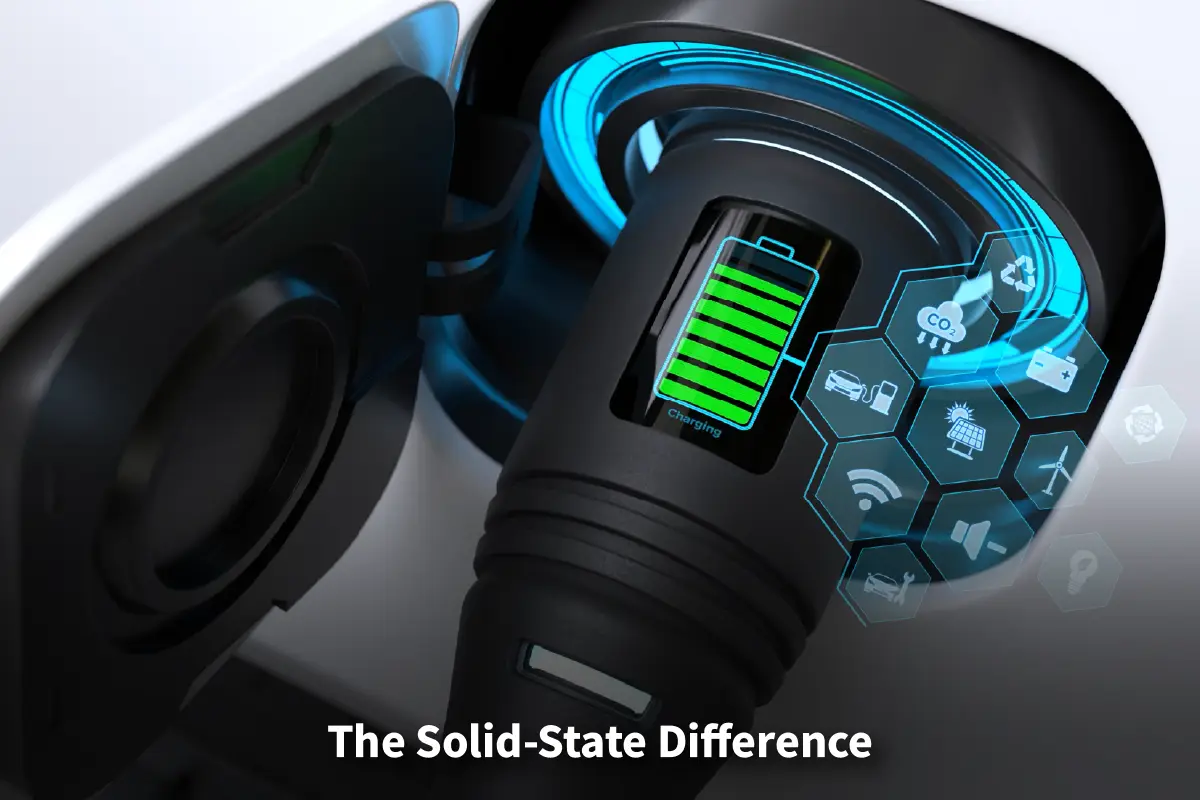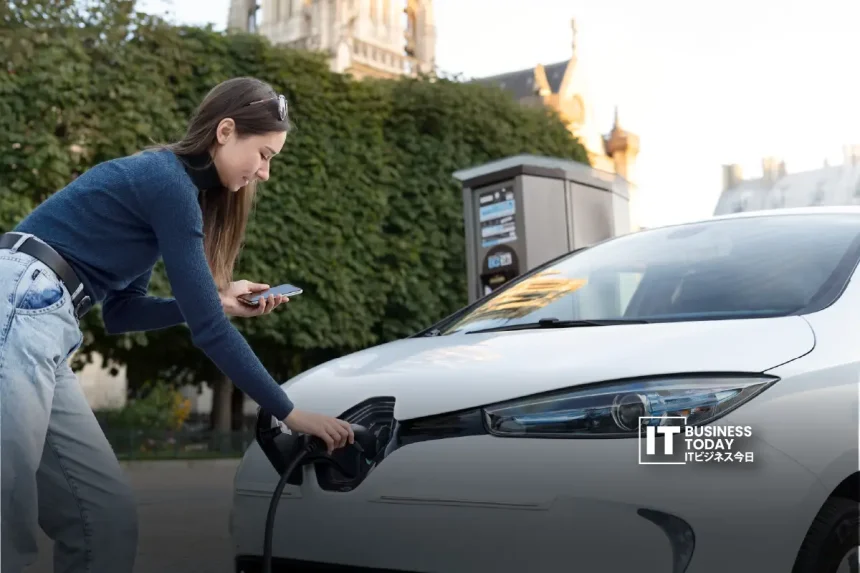The soft hum of an electric vehicle moving down the street is now a common sound in the 21st century. But under this smooth shift from fossil fuels, there’s a stubborn issue: the battery. Lithium-ion technology started the EV wave, but it has limitations. These include range anxiety, long charging times, safety issues, and material constraints. Japan’s top automotive and tech leaders need more than small changes for solutions. It’s about a complete reinvention. Japan isn’t just joining the solid-state battery revolution; it’s leading the charge.
Japan leads a national effort in R&D labs across Tokyo, Kyoto, and Nagoya. The government and businesses unite in strong support of this initiative. Japan leads the world in materials science, precision manufacturing, and automotive quality. This strong position helps it push solid-state technology ahead. This technology is set to grow from a promising prototype into an industrial leader. The implications for Japan Inc. They cover many topics, such as car industry leadership, energy security, and a bigger role in the global tech supply chain.
The Solid-State Difference

A solid-state battery replaces the flammable liquid electrolyte in regular lithium-ion cells with a solid material. This simple change brings many important benefits for the next generation of EVs.
Also Read: Tokenized Everything: Japan’s Emerging Ecosystem of Digital Assets and Web3 Finance
Picture electric vehicles that can go much farther on one charge, maybe even double the usual distances. Toyota claims its solid-state batteries could enable a range of 1,200 kilometers (745 miles) on a single charge. Solid-state technology offers a dramatically higher theoretical energy density. This translates directly to overcoming the paramount consumer concern: range anxiety. Imagine electric trucks cruising Japan’s highways without frequent charging. Picture small city cars needing just weekly recharges. This leap isn’t merely convenient; it expands the viable market for EVs exponentially.
Charging times, another major friction point, are poised for radical reduction. The solid electrolyte speeds up ion movement. This could enable super-fast charging in minutes, like filling up a regular car. This tackles a major infrastructure issue. It also makes EVs easier for everyone, like taxi drivers and long-distance commuters.
Safety, a non-negotiable priority, receives a quantum boost. Removing volatile liquid electrolytes greatly cuts down the risk of thermal runaway. This is the chain reaction that can cause battery fires. For automakers facing tough safety rules and trust problems, this stability changes everything. Imagine battery packs that are safer. They need simpler thermal management systems, which can cut costs. This may lead to easier vehicle designs and better passenger safety.
Furthermore, solid-state batteries promise longer lifespans, enduring significantly more charge-discharge cycles before degradation. This lowers the total cost of ownership for consumers. It also boosts the residual value of EVs, which helps with wider adoption. They open up ways to use more abundant and less problematic materials. This is better than current lithium-ion batteries that rely on cobalt and nickel. It also supports global sustainability goals and cuts down supply chain risks. Over 70% of global cobalt comes from the Democratic Republic of Congo, a supply chain risk solid-state tech can help mitigate.
Japan’s Strategic Charge
Japan isn’t merely dabbling in solid-state research; it’s orchestrating a coordinated national effort. Legacy automakers, materials leaders, and agile startups are coming together. They are driven by strong government support, like the US$ 20 billion Green Innovation Fund. This collaborative ecosystem is Japan’s secret weapon.
Toyota, the world’s largest automaker, stands as a titan in this arena. Toyota has filed over 1,300 patents related to solid-state batteries, more than any other company globally. It’s not just researching; it’s also putting them into production. Their strategy uses multiple pathways to explore solid electrolyte materials. Sulfide-based materials lead the way. The goal is to prepare for hybrid vehicle production soon. This will set the stage for full BEV integration. Their roadmap shows a big increase in production in the next few years. This signals the whole industry.
Nissan, known for popular EVs like the Leaf, is working hard on its solid-state technology. They focus on unique materials and manufacturing processes. Their goal is to set up a pilot production line in Yokohama soon. Nissan’s vision goes beyond just cars. They view solid-state batteries as essential for various applications. These include e-Power hybrids and stationary storage. This helps create integrated energy systems.
Honda is investing ¥43 billion (approx. US$ 300 million) in next-gen battery R&D. They are working with partners like GS Yuasa, which is a top name in regular batteries. They work together on cars and the rising market for electric vertical take-off and landing aircraft (eVTOLs). In this sector, solid-state technology’s high energy density and safety are crucial. This diversification showcases the technology’s broad disruptive potential.
Beyond the automotive giants, Japan’s formidable materials science sector is the bedrock. Idemitsu Kosan, a traditional oil company, is now making a big change. They are working on important sulfide-based solid electrolytes. Murata Manufacturing is a leader in global electronics. They apply their skills in miniaturization and mass production to solve the solid-state challenge. Startups like 24M Technologies are innovating in semi-solid and manufacturing methods. Though based in the US, they have strong ties and interest in Japan. Japan has a strong skills network in basic materials and production engineering. This gives them a big advantage.
Navigating the Roadblocks

The path to widespread solid-state adoption isn’t without its bumps. Manufacturing complexity remains a significant hurdle. Creating ultra-thin, perfect solid electrolyte layers is a big engineering challenge. It’s different from producing liquid lithium-ion batteries. Scaling these novel processes cost-effectively is critical for market competitiveness. Material costs, particularly for some advanced solid electrolytes, also need to trend downwards.
Interface stability is crucial. It keeps a strong bond between the solid electrolyte and electrodes. This connection lasts through many charge cycles. This is a key technical focus area. Dendrite formation may be less of a problem in liquid cells. Still, we need strong solutions to ensure they last long. These are complex materials science puzzles demanding relentless R&D.
This is precisely where Japan’s collaborative model shines. The “Battery Association for Supply Chain” (BASC) brings together automakers, battery makers, and material suppliers. They help with research and build shared infrastructure before competition starts. Government funding actively supports these collaborations, de-risking the substantial investments required. It’s clear: tackling these challenges is a national priority. It needs shared resources and knowledge.
Strategic Imperatives for Japanese Business Leaders
The shift to solid-state batteries is more than just engineering; it’s a huge business wave. Leaders across industries must proactively position their organizations:
- Automotive OEMs & Suppliers: Switching to solid-state will impact vehicle design, power electronics, and thermal management. Deep collaboration with battery developers and materials suppliers is essential. Rethink supply chains. It’s crucial to secure access to key raw materials like lithium. We need new materials for solid electrolytes. This includes sulfides, oxides, and polymers. Reducing reliance on cobalt and nickel is important too. Invest in understanding the novel manufacturing processes. Companies that excel in integrating solid-state packs will gain major first-mover benefits. They will see improvements in performance, cost, and brand perception.
- Materials & Chemical Companies: This is a golden era for materials innovation. There are chances for growth in several areas. These include advanced electrode materials for solid-state systems, specialized binders, and protective coatings. Strong materials knowledge leads companies to focus on R&D. They should also form strategic partnerships with battery makers and automakers. Also, they must increase their production capabilities. Idemitsu Kosan’s pivot is a prime example of seizing this disruption.
- Electronics & Industrial Giants: Skills in thin-film deposition, precision manufacturing, quality control, and sensor integration help in making solid-state batteries. Companies like Canon or Hitachi possess invaluable capabilities. Solid-state batteries will open up new product types. These include longer-lasting portable medical devices and strong robotics. This will create new markets. Proactively explore these adjacencies.
- Energy & Utilities: Solid-state batteries are safe and long-lasting. This makes them great for grid storage. They also help integrate renewable energy. Utilities should closely monitor progress. They should look at pilot projects and partnerships. This shows how technology boosts grid stability and enables new energy services.
- Investors & Financial Institutions: Find and back leaders in the value chain. This includes innovative materials startups and automakers with solid-state plans. Understand the technology milestones and manufacturing scale-up risks. This transition requires patient, strategic capital.
A Re-Energized Japan
The successful commercialization of solid-state batteries represents more than just a better EV. It’s a potential renaissance for Japanese industry. By leading this critical technology, Japan can:
- Leading Automotive Innovation: Japan can shift consumer preferences by creating EVs that have longer ranges, better safety, and quicker charging times. This will help restore its pioneering spirit in the automotive industry.
- Break Free from Energy Dependence: Advanced battery tech helps us rely less on imported fossil fuels and better use renewable energy.
- Control a Key Value Chain: Japan is at the forefront of the global energy shift. It holds important IP and has strong manufacturing skills for next-gen batteries. This leads to high-value jobs and export chances.
- Enhance Sustainable Growth: Combining tech leadership with eco-friendliness improves Japan’s global image and helps reach decarbonization goals.
The Call to Action
The race for solid-state supremacy is accelerating globally. Japan faces challenges, but it has strong technical skills, good industrial teamwork, and a clear strategy. These strengths can help turn its research lead into real commercial success. Japanese business leaders see the message clearly: solid-state batteries are here to stay. They are the key to the next industrial era. Ignoring this shift is not an option.
Engage deeply with the ecosystem. Foster collaborations. Invest strategically in R&D and manufacturing innovation. Secure supply chains. Companies and leaders who embrace this change won’t just adapt to electric mobility. They will drive it forward and power Japan’s economy for many years. The future isn’t just electric; it’s solid-state, and Japan is poised to write the blueprint. The time to plug into this transformation is now.







